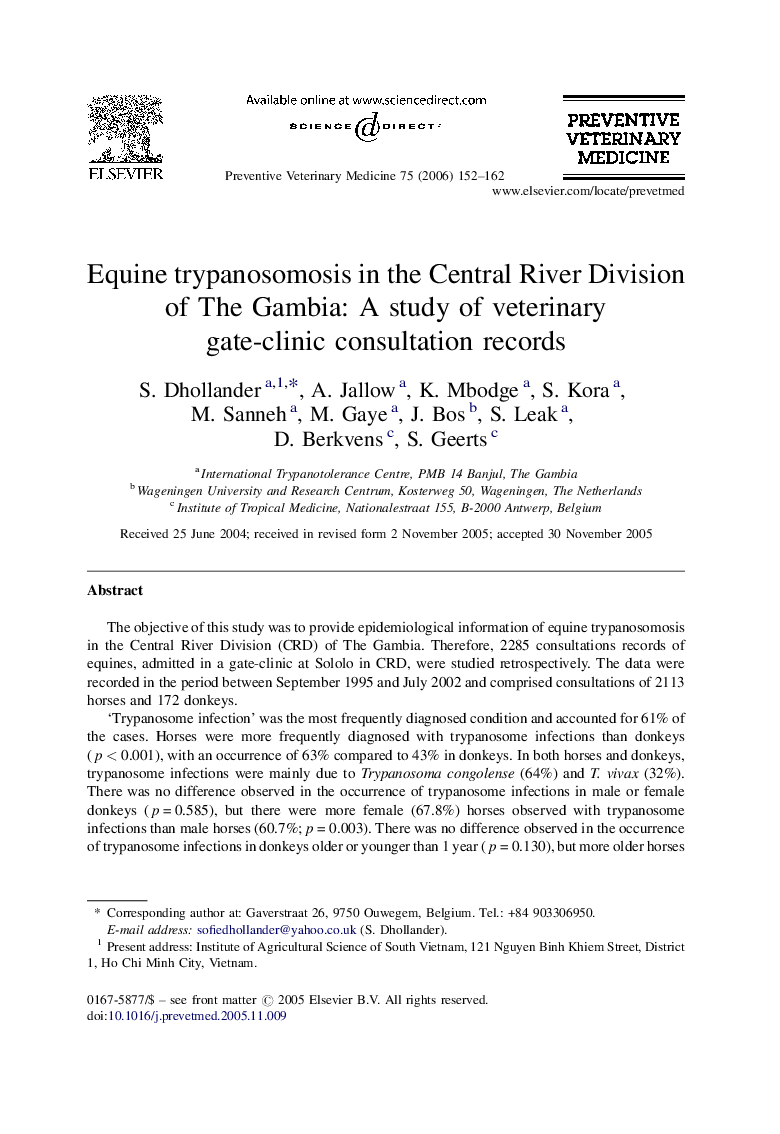| Article ID | Journal | Published Year | Pages | File Type |
|---|---|---|---|---|
| 2453708 | Preventive Veterinary Medicine | 2006 | 11 Pages |
The objective of this study was to provide epidemiological information of equine trypanosomosis in the Central River Division (CRD) of The Gambia. Therefore, 2285 consultations records of equines, admitted in a gate-clinic at Sololo in CRD, were studied retrospectively. The data were recorded in the period between September 1995 and July 2002 and comprised consultations of 2113 horses and 172 donkeys.‘Trypanosome infection’ was the most frequently diagnosed condition and accounted for 61% of the cases. Horses were more frequently diagnosed with trypanosome infections than donkeys (p < 0.001), with an occurrence of 63% compared to 43% in donkeys. In both horses and donkeys, trypanosome infections were mainly due to Trypanosoma congolense (64%) and T. vivax (32%). There was no difference observed in the occurrence of trypanosome infections in male or female donkeys (p = 0.585), but there were more female (67.8%) horses observed with trypanosome infections than male horses (60.7%; p = 0.003). There was no difference observed in the occurrence of trypanosome infections in donkeys older or younger than 1 year (p = 0.130), but more older horses (63.2% >1 year) were observed with trypanosome infections than young horses (54.5% <1 year; p = 0.033).The number of donkeys and horses with trypanosome infections decreased during the rainy season (June–September).The majority of equines that were admitted with trypanosome infections were severely anaemic. The average packed cell volume (PCV) declined with increasing parasitaemia (p = 0.006).Seventy-four percent of the farmers’ predictions of trypanosome infections in their equines were confirmed by darkground-microscopy. That proved that farmers had a fairly accurate knowledge of the diseases affecting their equines.The treatments executed at the gate-clinic were generally effective. The few (0.4%) relapses of the T. vivax infections that were previously treated with diminazene aceturate in this study were not sufficient to prove drug resistance.The study showed that the analysis of consultation records at a gate-clinic can provide complementary information to conventional epidemiological studies in the same research area.
